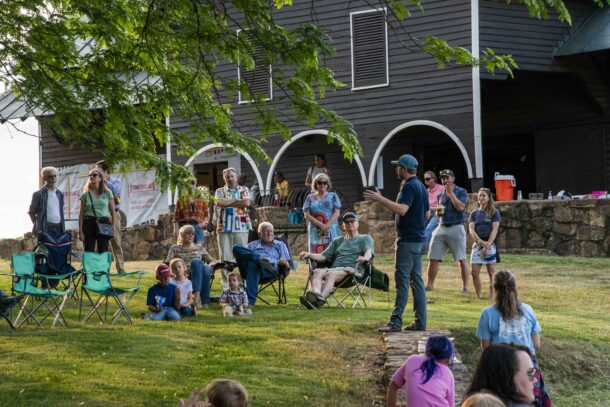In reading or hearing about the Rappahannock River, you may have encountered the term “riparian.” Riparian is an adjective used for the area along a river or stream’s edge and is used with several different words. A riparian zone or area is the complete three-dimensional space where water and land interact with each other. A riparian corridor (or buffer) is more specifically defined as a relatively long and narrow strip of buffering vegetation at the immediate river’s edge. These corridors contain water-loving vegetation, including wetland habitat and forests. In the drier American West, riparian corridors appear as bands of water-demanding cottonwood trees and shrubs that snake their way through open landscapes, following river and stream courses. The Rappahannock’s riparian corridor is somewhat the reverse of that, mostly made up of linear remnant or regenerated deciduous forest patches and marshes surrounded by agricultural fields and developed areas. In some places, such as in the City of Fredericksburg and just to the east, it can get quite narrow.
So, what is the value of riparian corridors?
First, they are extremely important for water quality maintenance. They reduce erosion, filter runoff, and regulate the amount of nutrients entering rivers. They can also keep the water temperature favorable for fish, amphibians, and aquatic insects and shellfish. Overall, they make for healthier and more biodiverse rivers.
Second, riparian corridors are beneficial for terrestrial wildlife. They directly provide food and breeding resources in areas where those resources are being squeezed by human activities. In my own bird surveys of the Rappahannock’s corridor, I found certain species, such as Kentucky Warblers and Wood Thrushes, only in places where a broad, mature strip of forest extends well beyond the river’s edge. How many times do we see Bald Eagles and Osprey taking advantage of perches provided by mature trees along the water to rest or scope out the best places to fish?
Third, birds, mammals and other wildlife need to move for a variety of reasons. They may need to relocate when resources become depleted or to avoid breeding with relatives. Young animals need to get away from their parents and siblings to find mates which are genetically different from themselves to keep their offspring healthy. Ecologists call this type of movement natal dispersal. Additionally, many animals are migratory. Birds that spend the winter in Central America or the Caribbean, for example, need friendly habitat with refueling opportunities to
successfully navigate their way to their breeding grounds. Riparian corridors can therefore act as important uninterrupted wildlife highways to keep animals safe and well-fed while on the move, whether they are dispersing or migrating. Where they run underneath bridges, corridors can keep wildlife out of actual highways (think I-95!). In a study in the Brazilian rainforest, researchers transported birds from their forested home ranges to a palm plantation that contained a managed riparian corridor. As they tracked the birds’ return to their original territories, they found that the birds overwhelmingly stuck to the corridor. Only one cut directly through the plantation. Studies such as these show that wildlife prefer corridors to disturbed areas.
We are lucky that the City of Fredericksburg created a conservation easement to provide a permanent riparian corridor along the Rappahannock. Water quality is better for it, but so are land-dwelling animals. And who wants to look at the backs of strip malls and subdivisions while trying to enjoy a peaceful paddle?
If you are a land owner with stream or riverfront property and interested in restoring and/or maintaining it as a riparian corridor, the Friends of the Rappahannock has programs right for you. Thanks for keeping the Rappahannock healthy and scenic for all to enjoy!
 This guest blog post was written by Dr. Andrew Dolby, a biology professor at the University of Mary Washington and the FOR Board Chair. Dr. Dolby has studied extensively on micro plastics found in birds as well as other impacts the river and its surrounding habitants have on local wildlife.
This guest blog post was written by Dr. Andrew Dolby, a biology professor at the University of Mary Washington and the FOR Board Chair. Dr. Dolby has studied extensively on micro plastics found in birds as well as other impacts the river and its surrounding habitants have on local wildlife.




